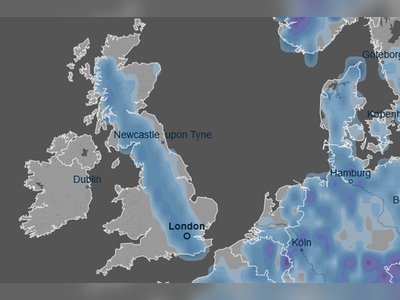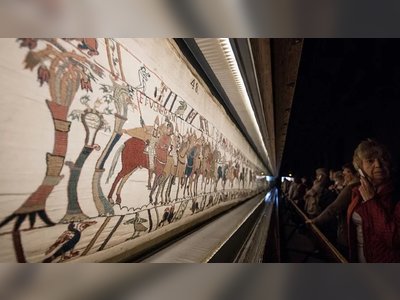
Chicago mayor unveils list of 40 city statues being reviewed for removal, including monuments of Lincoln and Washington
Chicago Mayor Lori Lightfoot has launched an effort to face the “hard truths of Chicago’s racial history” by reviewing over 40 statues and monuments across the city, including some of Abraham Lincoln, George Washington, Ulysses S. Grant, William McKinley, and Benjamin Franklin.
“Given the past year and in particular the past summer that made clear history isn’t past, it is essential that residents are a part of this conversation. This project is about more than a single statue or mural, it’s about channeling our city’s dynamic civic energy to permanently memorialize our shared values, history and heritage as Chicagoans in an open and democratic way,” Lightfoot said in a press release.
The move comes six months after Lightfoot temporarily had two statues of Christopher Columbus removed in the dark of night after receiving “intelligence that gave us great concern” something was about to happen to them.
At the time, Lightfoot argued that such statues should not come down permanently but instead be used as tools in learning to confront the country’s history in a way that was overdue.
The city later launched the Chicago Monuments Project, creating a committee that set out to review over 500 statues and monuments to find those that could be seen as “offensive, problematic or not representative of the city's values of equity and justice.”
That committee narrowed the list of potentially problematic statues and monuments to about 40 last month, saying those that made the list had ties to white supremacy, demeaned Native Americans, had connections to slavery, or presented “over-simplified, one-sided views of history.”
The newly released list of potential statues and monuments up for removal includes five of Lincoln, founding fathers Benjamin Franklin and George Washington, and a police memorial. The committee launched a public engagement process, set to end on April 1, with city residents encouraged to give feedback on which monuments should remain or go.
Lightfoot called the review of the city’s monuments and statues a “powerful opportunity for us to come together as a city to assess the many monuments and memorials across our neighborhoods and communities — to face our history and what and how we memorialize that history.”
The public engagement process will also include a plan to “erect a series of new monuments that equitably acknowledge Chicago’s shared history.”
“The Chicago Monuments Project Advisory Committee has considered hundreds of the city’s sculptures and plaques in this critically important process,” said Mark Kelly, who was one of the committee's co-chairs.
“The city’s public art collection is a defining characteristic of Chicago, and it should reflect and respect all Chicagoans. The public’s input will now help us evaluate the collection and to commission new works.”
The move comes six months after Lightfoot temporarily had two statues of Christopher Columbus removed in the dark of night after receiving “intelligence that gave us great concern” something was about to happen to them.
At the time, Lightfoot argued that such statues should not come down permanently but instead be used as tools in learning to confront the country’s history in a way that was overdue.
The city later launched the Chicago Monuments Project, creating a committee that set out to review over 500 statues and monuments to find those that could be seen as “offensive, problematic or not representative of the city's values of equity and justice.”
That committee narrowed the list of potentially problematic statues and monuments to about 40 last month, saying those that made the list had ties to white supremacy, demeaned Native Americans, had connections to slavery, or presented “over-simplified, one-sided views of history.”
The newly released list of potential statues and monuments up for removal includes five of Lincoln, founding fathers Benjamin Franklin and George Washington, and a police memorial. The committee launched a public engagement process, set to end on April 1, with city residents encouraged to give feedback on which monuments should remain or go.
Lightfoot called the review of the city’s monuments and statues a “powerful opportunity for us to come together as a city to assess the many monuments and memorials across our neighborhoods and communities — to face our history and what and how we memorialize that history.”
The public engagement process will also include a plan to “erect a series of new monuments that equitably acknowledge Chicago’s shared history.”
“The Chicago Monuments Project Advisory Committee has considered hundreds of the city’s sculptures and plaques in this critically important process,” said Mark Kelly, who was one of the committee's co-chairs.
“The city’s public art collection is a defining characteristic of Chicago, and it should reflect and respect all Chicagoans. The public’s input will now help us evaluate the collection and to commission new works.”











